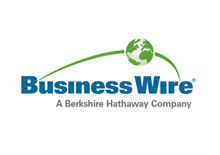Global Textile Yarn Market to 2026 - Industry Perspective, Comprehensive Analysis and Forecast - ResearchAndMarkets.com
The "Textile Yarn Market - By Source, and Natural: Global Industry Perspective, Comprehensive Analysis and Forecast, 2020 - 2026" report has been added to ResearchAndMarkets.com's offering.
The global demand for the Textile Yarn Market was valued at USD 11.9 Billion in 2019 is expected to reach USD 16.0 Billion in 2026 and is anticipated to grow at a CAGR of 4.0% between 2020 and 2026.
Textile is one of the basic needs of human population. Textile industry is witnessing huge demands in Asia Pacific regions due to population explosion. The adoption of new trends globally and introduction of new fabrics are some of the major factors driving demand for textile yarns.
A continuous length of long interlocked fibers is known as yarn; it used in the various process of the textiles production such as weaving, sewing, embroidery, rope making, knitting, and crocheting. The thread is kind of textile yarn specially intended for sewing by machine or hand. Embroidery threads are also the type of textile yarns, which is designed for a machine, or hand embroidery. The textile yarn is made up of numerous synthetic or natural fibers. Natural fibers are little elastic and extremely breathable. Cotton is the most common plant fiber, while synthetic fibers come in the three forms such as a filament, staple, and tow. Filament and spun are basic types of the textile yarn.
Rapid growth in the urbanization and increasing requirement of the industries are the major factors that anticipate driving the market growth. The shift in consumer preference towards affordable and comfortable clothing increases the demand for high-value fabrics such as viscose, silk, and hemp. Blended varieties of fibers are also taking immense growth in the market owing to significant features of both artificial and natural yarn thus opening up new growth opportunities in the coming years. However, instability in the production of plant and animal source yarn and the strict regulation that is imposed on the trade of textile yarn products restraints the global textile yarn market to some extent.
What the Report Provides
- Full in-depth analysis of the parent market
- Important changes in market dynamics
- Segmentation details of the market
- Former, on-going, and projected market analysis in terms of volume and value
- Assessment of niche industry developments
- Market share analysis
- Key strategies of major players
- Emerging segments and regional markets
- Testimonials to companies in order to fortify their foothold in the market.
Key Topics Covered:
1 Preface
2 Research Methodology
3 Executive Summary
3.1 Global Textile Yarn Market, 2016 - 2026 (USD Million)
3.2 Global Textile Yarn Market: Snapshot
4 Textile Yarn Market - Industry Analysis
4.1 Introduction
4.2 Market Drivers
4.3 Market Restraints
4.4 Market Opportunities
4.5 Porter's Five Forces Analysis
4.6 COVID-19 Impact Analysis
5 Investment Proposition Analysis
5.1 Global Textile Yarn Market Attractiveness, By Source
5.2 Global Textile Yarn Market Attractiveness, By Application
5.3 Global Textile Yarn Market Attractiveness, By Type
5.4 Global Textile Yarn Market Attractiveness, By Region
6 Competitive Landscape
6.1 Company Market Share Analysis - 2019
6.2 Strategic Developments
7 Textile Yarn Market - Source Segment Analysis
7.1 Global Textile Yarn Market Overview: by Source
7.2 Global Textile Yarn Market Analysis/Overview - By Source
7.2.1 Chemical - Overview/Analysis
7.2.2 Animal - Overview/Analysis
7.2.3 Plant - Overview/Analysis
7.2.4 Others - Overview/Analysis
7.3 Chemical
7.3.1 Global Textile Yarn Market for Chemical, Revenue (USD Million) 2016 - 2026
7.4 Animal
7.4.1 Global Textile Yarn Market for Animal, Revenue (USD Million) 2016 - 2026
7.5 Plant
7.5.1 Global Textile Yarn Market for Plant , Revenue (USD Million) 2016 - 2026
7.6 Others
7.6.1 Global Textile Yarn Market for Others, Revenue (USD Million) 2016 - 2026
8 Textile Yarn Market - Application Segment Analysis
8.1 Global Textile Yarn Market Overview: by Application
8.1.1 Global Textile Yarn Market Revenue Share, by Application, 2019 & 2026
8.2 Global Textile Yarn Market Analysis/Overview - By Application
8.2.1 Home Textile - Overview/Analysis
8.2.2 Apparel - Overview/Analysis
8.2.3 Industrial - Overview/Analysis
8.3 Home Textile
8.3.1 Global Textile Yarn Market for Home Textile, Revenue (USD Million) 2016 - 2026
8.4 Apparel
8.4.1 Global Textile Yarn Market for Apparel, Revenue (USD Million) 2016 - 2026
8.5 Industrial
8.5.1 Global Textile Yarn Market for Industrial, Revenue (USD Million) 2016 - 2026
9 Textile Yarn Market - Type Segment Analysis
9.1 Global Textile Yarn Market Overview: by Type
9.1.1 Global Textile Yarn Market Revenue Share, by Type, 2019 & 2026
9.2 Global Textile Yarn Market Analysis/Overview - By Type
9.2.1 Artificial - Overview/Analysis
9.2.2 Natural - Overview/Analysis
9.3 Artificial
9.3.1 Global Textile Yarn Market for Artificial, Revenue (USD Million) 2016 - 2026
9.4 Natural
9.4.1 Global Textile Yarn Market for Natural, Revenue (USD Million) 2016 - 2026
10 Textile Yarn Market - Regional Analysis
10.1 Global Textile Yarn Market: Regional Overview
10.2 North America
10.3 Europe
10.4 Asia Pacific
10.5 Latin America
10.6 The Middle-East and Africa
11 Company Profiles
11.1 Parkdale Mills Incorporated
11.1.1 Company Overview
11.1.2 Financial Overview
11.1.3 Product portfolio
11.1.4 Business Strategy
11.1.5 Recent Developments
11.2 Hengli Group
11.3 Kairuide Hulding Co Ltd.
11.4 Vardhman Textiles Limited
11.5 Birleik Koyunlulular Mensucat TIC. V.
11.6 Weiqiao Textile Company Limited
11.7 E SAN.
11.8 Low & Bonar Plc.
11.9 Raymond Limited
11.10 Huvis Corporation
11.11 Grasim Industries Limited.
For more information about this report visit https://www.researchandmarkets.com/r/u2lbgd
View source version on businesswire.com: https://www.businesswire.com/news/home/20200910005648/en/





